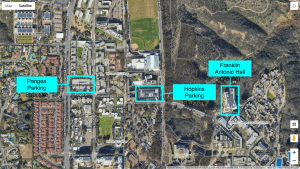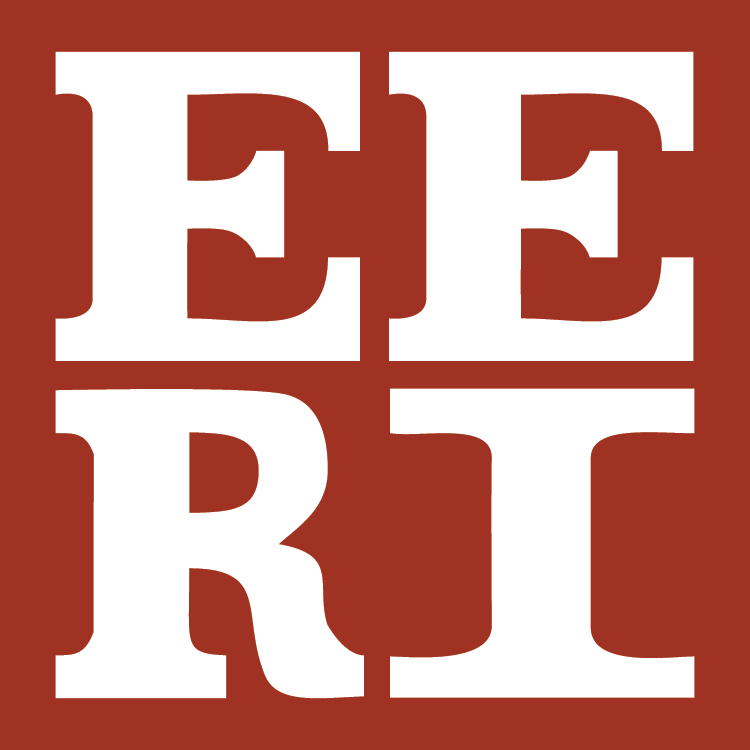7th Kenji Ishihara Colloquium Series on Earthquake Engineering | Day 2
One-Day Short Course
Dr. Rui Chen, California Geological Survey
Alexandra Sarmiento, P.E., P.G., CEG | GeoPentech, Inc.; University of California, Los Angeles
Dr. Stephen Thompson, Lettis Consultants International, Inc.
Friday, August 22nd, 2025, 8:30am-3:30pm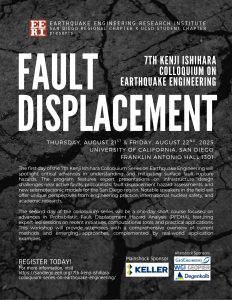
University of California, San Diego
Franklin Antonio Hall 1301
The second day of the 7th Kenji Ishihara Colloquium Series on Earthquake Engineering, cohosted with EERI UCSD, will be a workshop focused on advances in Probabilistic Fault Displacement Hazard Analysis (PFDHA), featuring expert-led sessions on recent initiatives, computational tools, and practical applications. Presentations provide attendees with a comprehensive overview of current methods and emerging approaches, complemented by real-world application examples.
Click the image on the right to view the event flyer.
Click here to go to Day 1 of the 7th Kenji Ishihara Colloquium Series.
ABSTRACTS
Fault Displacement Hazard Initiative (FDHI) Program Overview, Scenario-Based FDHA Computational Tools
Alexandra Sarmiento and Yousef Bozorgnia
The Fault Displacement Hazard Initiative (FDHI) Project is a community-based research program that was established to advance the state-of-practice in fault displacement hazard analysis (FDHA). Toward this end, a comprehensive and standardized database of fault displacement measurements, surface rupture maps, and supporting information from 75 historical, surface-rupturing earthquakes was created. Four new fault displacement models (FDMs) providing probability distributions for surface fault displacement were developed using the new database. The results from this first phase of the FDHI Project are published in Earthquake Spectra‘s “Fault Displacement Hazard Analysis Special Collection.” The new models are implemented in a publicly available Python package and Excel workbook.
Probabilistic Fault Displacement Hazard Analysis (PFDHA) – An Overview
Dr. Rui Chen
Fault displacement hazard analysis (FDHA) provides quantitative estimates of surface fault displacement from future earthquakes —critical for the safe design of infrastructure that crosses or lies near active faults. This presentation reviews the fundamentals of FDHA and briefly compares its two primary methodologies: deterministic FDHA and probabilistic FDHA (PFDHA). The focus of this presentation is on PFDHA, which extends the methodology of probabilistic seismic hazard analysis by replacing ground motion models with fault displacement models and incorporating additional probabilistic elements to account for the occurrence of surface rupture (i.e., the earthquake approach). Key components of the PFDHA framework are outlined, and their integration is demonstrated through an open-access Fortran implementation, accompanied by example results. While the presentation centers on principal displacement, distributed displacement is also briefly discussed. The talk further highlights evolving building code requirements, emerging national and international guidance, and ongoing research efforts to advance PFDHA.
Fault Displacement Hazard Analysis Example Applications
Dr. Stephen Thompson
This talk will review key components of fault displacement hazard analysis for the evaluation of design and/or seismic safety of various types of infrastructure, including both lifelines (gas and water pipelines, rail lines) and structures with fixed footprints (dams, buildings). Uncertainty in the location of active faults has been and will continue to be the most vital part of the hazard assessment for most projects. Aside from the mantra of location, location, location, the talk will provide a series of example applications for both principal and distributed displacement hazard that will discuss the implementation of published models for PFDHA, common mistakes or misconceptions we have observed, which model components dominate the uncertainty in hazard, and how logic trees can (and should) incorporate epistemic uncertainties that go beyond the currently available published models. The talk will also provide some suggestions—and hopefully generate some discussion—about how to communicate the results of a PFDHA to aid in decision making.
MEET THE INSTRUCTORS
Dr. Rui Chen
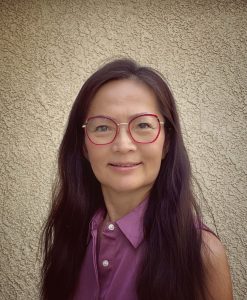 Rui Chen is a Senior Seismologist with the California Geological Survey (CGS), where she has served since 2008. Her expertise includes ground motion hazard analysis to support CGS’ regulatory liquefaction and earthquake induced landslide hazard mapping program, as well as the review of geotechnical investigations for critical facilities such as hospitals, schools, and nuclear installations. She conducts research on probabilistic fault displacement hazard analysis, including the development of fault displacement and rupture probability models. She also contributes to statewide earthquake shaking potential maps and earthquake loss estimation for California. Rui Chen holds a Ph.D. in Civil and Geological Engineering from the University of Manitoba, Canada, and M.S. and B.S. degrees in earthquake sciences from institutions in China. She is a licensed Professional Engineering Geologist in California and has over three decades of experience in academia, consulting, and applied geosciences.
Rui Chen is a Senior Seismologist with the California Geological Survey (CGS), where she has served since 2008. Her expertise includes ground motion hazard analysis to support CGS’ regulatory liquefaction and earthquake induced landslide hazard mapping program, as well as the review of geotechnical investigations for critical facilities such as hospitals, schools, and nuclear installations. She conducts research on probabilistic fault displacement hazard analysis, including the development of fault displacement and rupture probability models. She also contributes to statewide earthquake shaking potential maps and earthquake loss estimation for California. Rui Chen holds a Ph.D. in Civil and Geological Engineering from the University of Manitoba, Canada, and M.S. and B.S. degrees in earthquake sciences from institutions in China. She is a licensed Professional Engineering Geologist in California and has over three decades of experience in academia, consulting, and applied geosciences.
Alexandra Sarmiento
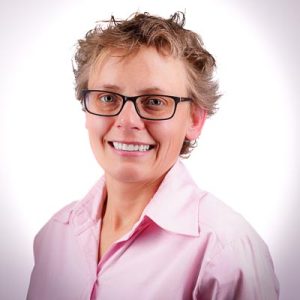 Alexandra Sarmiento is a seismic hazard analyst at GeoPentech, Inc. and a researcher at the University of California, Los Angeles (UCLA) with 15 years of experience in consulting practice and academia. Her expertise includes seismic source characterization, ground motion hazard analysis, ground motion development, and fault rupture and displacement hazard analysis. Alexandra is part of the Fault Displacement Hazard Initiative (FDHI) research project at UCLA, where she led the development of a new, high-quality database of mapped surface ruptures and fault displacement measurements. She also led a comprehensive technical comparison of new and existing fault displacement models. Alexandra has B.S. and M.S. degrees in Geological Engineering and Geology, respectively, from the University of Nevada, Reno and is registered in California as a Professional Engineer, Professional Geologist, and Certified Engineering Geologist.
Alexandra Sarmiento is a seismic hazard analyst at GeoPentech, Inc. and a researcher at the University of California, Los Angeles (UCLA) with 15 years of experience in consulting practice and academia. Her expertise includes seismic source characterization, ground motion hazard analysis, ground motion development, and fault rupture and displacement hazard analysis. Alexandra is part of the Fault Displacement Hazard Initiative (FDHI) research project at UCLA, where she led the development of a new, high-quality database of mapped surface ruptures and fault displacement measurements. She also led a comprehensive technical comparison of new and existing fault displacement models. Alexandra has B.S. and M.S. degrees in Geological Engineering and Geology, respectively, from the University of Nevada, Reno and is registered in California as a Professional Engineer, Professional Geologist, and Certified Engineering Geologist.
Dr. Stephen Thompson
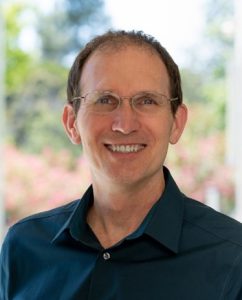 Stephen Thompson is a Senior Principal Engineering Geologist at Lettis Consultants International, Inc. (LCI) where he specializes in the characterization of active faults for hazard evaluation. Since completing his PhD in Geological Sciences at the University of Washington in 2001, Steve has been trying to provide clients and colleagues with useful information to help quantify and mitigate the hazards of surface-fault rupture and strong ground shaking. Steve spends much of his time trying not to be overwhelmed by the uncertainties—real and imagined—involved in fault source characterization for seismic hazard analysis (PSHA and DSHA) and fault displacement hazard analysis (PFDHA and DFDHA). Being able to effectively communicate with engineers keeps him up at night.
Stephen Thompson is a Senior Principal Engineering Geologist at Lettis Consultants International, Inc. (LCI) where he specializes in the characterization of active faults for hazard evaluation. Since completing his PhD in Geological Sciences at the University of Washington in 2001, Steve has been trying to provide clients and colleagues with useful information to help quantify and mitigate the hazards of surface-fault rupture and strong ground shaking. Steve spends much of his time trying not to be overwhelmed by the uncertainties—real and imagined—involved in fault source characterization for seismic hazard analysis (PSHA and DSHA) and fault displacement hazard analysis (PFDHA and DFDHA). Being able to effectively communicate with engineers keeps him up at night.
PROGRAM
Moderator: Taylor M. Gater, P.E. | GeoEngineers, Inc. || EERI San Diego Chapter Director of Events
| Time | Topic & Speaker | |
|---|---|---|
| 7:30am | 8:30am | Registration and Breakfast |
| 8:30am | 8:35am | Welcome and Overview of Program |
| 8:35am | 9:35am | (P)FDHA Overview Dr. Rui Chen | California Geological Survey |
| 9:35am | 9:45am | Break |
| 9:45am | 10:45am | Fault Displacement Hazard Initiative (FDHI) Program Overview Alexandra Sarmiento, P.E., P.G., C.E.G. | GeoPentech, Inc.; University of California, Los Angeles |
| 10:45am | 11:00am | Break |
| 11:00am | 11:45am | Scenario-Based FDHA Computational Tools Alexandra Sarmiento, P.E., P.G., C.E.G. | GeoPentech, Inc.; University of California, Los Angeles |
| 11:45am | 12:45pm | Lunch |
| 12:45pm | 2:15pm | FDHA Example Applications Dr. Stephen Thompson | Lettis Consultants International, Inc. |
| 2:15pm | 2:45pm | Discussion and Colloquium Wrap-Up |
VENUE
University of California, San Diego
Franklin Antonio Hall 1301
3180 Voigt Drive
La Jolla, CA 92093
REGISTRATION
Click here to register for the colloquium. Registration closes on Monday 8/18 at 11:59pm.
LODGING
Click here for a list of hotels near UCSD.
PARKING
For $8 per day, conference parking permits are available in advance through UCSD’s Parking Portal website, which you can access by clicking here. In order to purchase a parking permit, you will need to create an account. When you click on the aforementioned link, it should show a “Guest User Registration” form. Otherwise, click on “SIGNUP” in the upper right corner of the webpage. Once you fill out the form and create an account, follow the prompts to purchase your conference parking permit for the days you will be attending the colloquium.
You can also pay for parking through the ParkMobile app or website the day-of the colloquium. More information can be found here.
There are two structures available for parking near Franklin Antonio Hall: Hopkins and Pangea. The closest parking structure to the venue is Hopkins Parking Structure (view here or here), located on Voigt Dr. off of Hopkins Dr. If Hopkins is full, please go to Pangea Parking Structure (view here or here), located on Pangea Dr. off of N. Torrey Pines Rd. You may only park in B-spaces with your pre-purchased conference parking permit.
Click image below to see the parking structures and venue highlighted (from https://maps.ucsd.edu/map/default.htm):
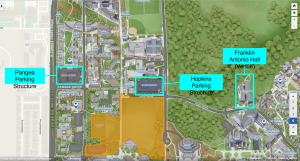
Click image below to see the parking structures and venue highlighted on Google Maps (from https://act.ucsd.edu/maps/):
